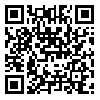Sat, Jun 7, 2025
[Archive]
Abstract: (124 Views)
Additive manufacturing (AM) of metallic parts has gained significant attention in recent years due to its ability to produce components without traditional tooling such as molds, melting furnaces, or extensive raw material preparation. Its unique capability to fabricate complex geometries has revolutionized part design and enabled substantial weight reduction. This review first outlines the development trajectory of metal-based AM, with a particular focus on laser-based fusion methods, including Laser Powder Bed Fusion (LPBF) and Direct Laser Deposition (DLD). Understanding this evolution helps researchers identify both the capabilities and limitations of AM technologies, thereby enhancing their application in areas such as prototyping, mass production, and repair. Each metal possesses unique physical and chemical properties, which often make traditional manufacturing methods more challenging—especially for alloys with high strength, hardness, or temperature resistance. In this context, the review then focuses on nickel-based superalloys (NBSAs), which are widely used in high-temperature and high-stress environments but are particularly difficult to process using conventional techniques. Their application serves as a representative case study for evaluating the performance and feasibility of AM techniques for advanced materials. Furthermore, the future prospects of AM are discussed, including advancements in monitoring systems, integration of machine learning, and the development of AM-specific alloys. As a novel aspect, this work compares LPBF and DLD in terms of their advantages, limitations, and resulting material properties, along with a comparison to traditional manufacturing methods such as casting and wrought processing.
Keywords: Additive manufacturing, Nickel-based superalloys, Laser Powder Bed Fusion, Direct Laser Deposition, advanced materials
Type of Study: Review Paper |
Send email to the article author
| Rights and permissions | |
 |
This work is licensed under a Creative Commons Attribution-NonCommercial 4.0 International License. |








